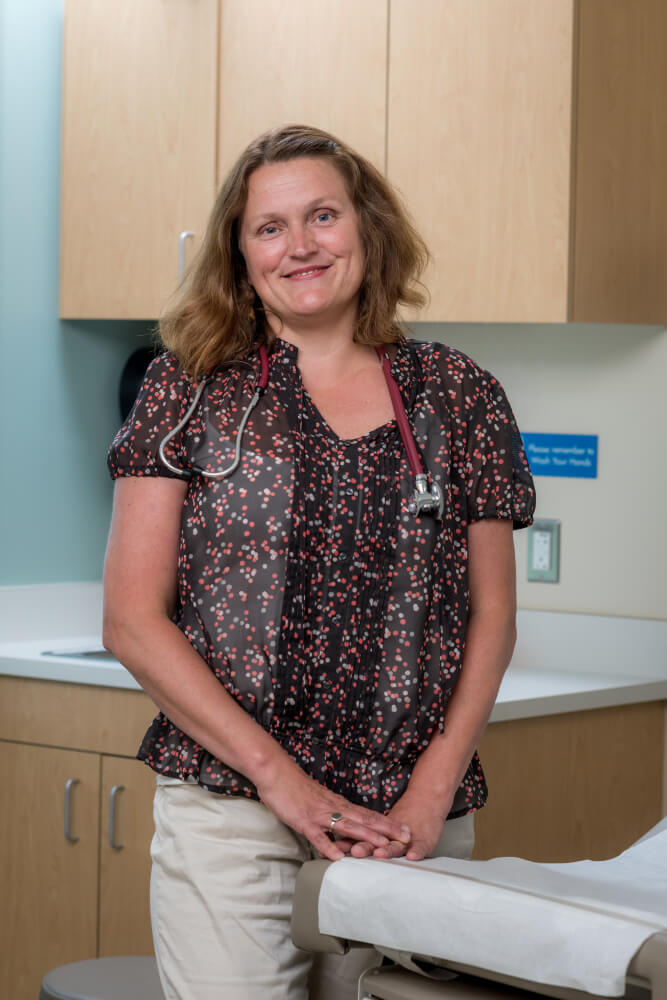If COVID-19 has taught us anything, it’s that with funding and regulatory support, the scientific community can move quickly and produce miracles.
So when President Joe Biden announced his commitment on Feb. 2, to cut cancer deaths by 50 percent over the next 25 years, it produced a wave of guarded optimism.
“This is great news for cancer patients and their families,” said Dana-Farber President and CEO Laurie H. Glimcher, MD, during an interview on CNN. “I’m optimistic that 25 years from now cancer will be detected earlier, treated earlier, and that we will have new cancer drugs that will benefit all of us, no matter what our zip code is.”
The key question is whether Congress will provide the necessary funding. Biden’s recent announcement is an extension of the “cancer moonshot” he launched as vice president in 2016, which was funded by $1.8 billion over seven years and has produced more than 240 cancer research projects.
But that money is beginning to dwindle as the project enters its final year.
“This year, only about 9 percent of grant applications from the National Cancer Institute (NCI) will be funded nationally,” said Jeffrey Meyerhardt, MD, MDH, chief clinical research officer at Dana-Farber. “The NCI goal is to get the funding rate up to 15 percent by 2025, but even higher will be needed to make meaningful strides in the research.”

Priorities
In addition to research, the February moonshot announcement included several new funding priorities, including an emphasis on early detection and treatment.
“Most people come to Dana-Farber with cancers that have already progressed and have spread,” said Glimcher. “If you present with stage one cancer, we have a very, very good chance of curing you. So we need early detection strategies, and I believe that is going to make this goal achievable over the next few years.”
The importance of early testing is highlighted by the 10,000 cancer screenings that did not take place because of the pandemic.
“We’re already seeing more patients coming in with advanced cancers because they didn’t have the opportunity to get colonoscopies, mammograms, and other screenings,” said Glimcher. “Unfortunately, I think we’re going to see a 10 percent increase in deaths from cancer over the next few years.”
As nurse director of Dana-Farber’s Cancer Care Equity Program, Ludmila Svoboda, BSN, RN, MA, OCN, agrees that the quickest way to reduce cancer deaths is through early diagnosis and treatment.

“Research advances are essential, but let’s not forget the low-hanging fruit, which is to catch cancer early, when it’s still most treatable,” she says. “We need to take it back to the basics and reach patients at the point of screening and early detection.”
Another new priority is to ensure that screening, treatment, and clinical trials are available to all segments of the population. Svoboda noted that although cancer screening is covered by both private and public insurance, many low-income citizens don’t have access to transportation or paid time off.
“I can’t tell you how many people tell me, ‘I can’t take time off for a screening because I have to work to pay the rent.’ We need to find creative ways to improve access to early diagnosis,” she said.
President Biden echoed this concern, noting the importance of home tests and creating a system of easy-access testing modeled on the nation’s COVID testing network.
Spotlight on research
Dana-Farber has ample experience spearheading Moonshot grants. Funding from the initial Moonshot included projects such as:
Symptom relief
Dana-Farber is collaborating on an effort by six hospital systems across the country to monitor patient symptoms in real-time using technology developed by Epic, an electronic medical records company. The hospital is the central repository for the self-reported data from more than 5,600 patients across the country. Researchers nationwide are using this data to track symptom trends that allow clinicians to adjust medications and treatments to minimize adverse side effects. The result is a significant improvement in the lives of cancer patients and their families.
Childhood cancer
Dana-Farber teams won two moonshot grants to identify why oncoproteins fuse in ways that stimulate malignant growth of currently incurable cancers such as Ewing sarcoma, synovial sarcoma, alveolar rhabdomyosarcoma; ependymoma, and acute myeloid leukemia.
Immunotherapy
Using the body’s immune system to disable cancer cells has proven to be an extremely effective way to treat cancer. The problem is that this methodology is only effective for only a handful of the more than more than 200 forms of cancer — and only 20 percent of the patients who suffer from them. Dana-Farber received several moonshot grants to study the molecular and genetic differences between the two groups, with the ultimate goals of customizing immunotherapies for individual patients.
Still, the most pressing challenge at this time is to move beyond bold words and provide funding needed to transform noble intentions into action. Although cynicism is at an all-time high about the ability of Congress to agree on anything, there is reason to hope this might be an exception. After all, a recent CBS News poll found that 54 percent of Americans have someone in their immediate family who has been diagnosed with cancer.
As President Biden said in his national address: “I know of nothing more bipartisan than curing cancer.”

Fabulous!